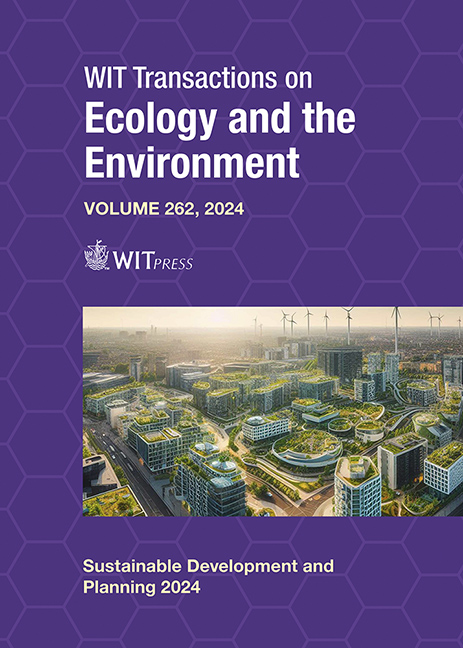SUSTAINABLE DESIGN STRATEGIES IN ARCHITECTURAL CONSTRUCTION, FOCUSING ON BIOMATERIALS AND THEIR APPLICATIONS FOR THE GOALS OF THE 2030 AGENDA
Price
Free (open access)
Transaction
Volume
262
Pages
12
Page Range
255 - 266
Published
2024
Paper DOI
10.2495/SDP240211
Copyright
Author(s)
CHRISTINA DIKOU, NIKOLAOS KOURNIATIS
Abstract
This paper is an attempt to raise awareness among the scientific community regarding biomaterials and innovative technologies that may contribute to the vision of sustainable cities of the future and the achievement of the goals of sustainable development of the United Nations (UN). It focuses on the 11th sustainable development goal, which urges us to create resilient and sustainable cities without poverty and exclusion. The methodology followed is both the secondary research of the problem through an analytical literature review and other elements, as well as the primary research through five case studies in Greece, which are consistent with the strategies proposed by the authors to achieve the UN’s 11th sustainable development goal, which urges us to create resilient and sustainable cities, free from poverty and exclusion. Thus, five indicators were developed with sub-criteria covering various dimensions of the subject, such as: 1. Performance of biomaterials; 2. Architecture and design; 3. Circular economy; 4. Resilience to changing climatic conditions; and 5. Community participation in decision-making. At the same time, the authors interviewed eight Greek architects who have integrated biotechnology and digital construction into their projects. Each indicator was assessed against qualitative criteria and case studies were selected based on these indicators. The purpose of this thesis is to explore the connection between biomaterials and technology in architectural construction as a design philosophy that can lead to a more efficient design, which will reduce and deal with the dramatic effects of climate change. It aims to learn from the principles of the circular economy and incorporate this knowledge into the development of new structures and the transformation of existing ones to understand the importance and impact their application can have in achieving the 11th goal of the 2030 agenda.
Keywords
biomaterials, low-carbon building materials, circular economy, modern construction technologies, passive energy systems, sustainable urban planning, biomimicry, UN sustainable development goals, 2





